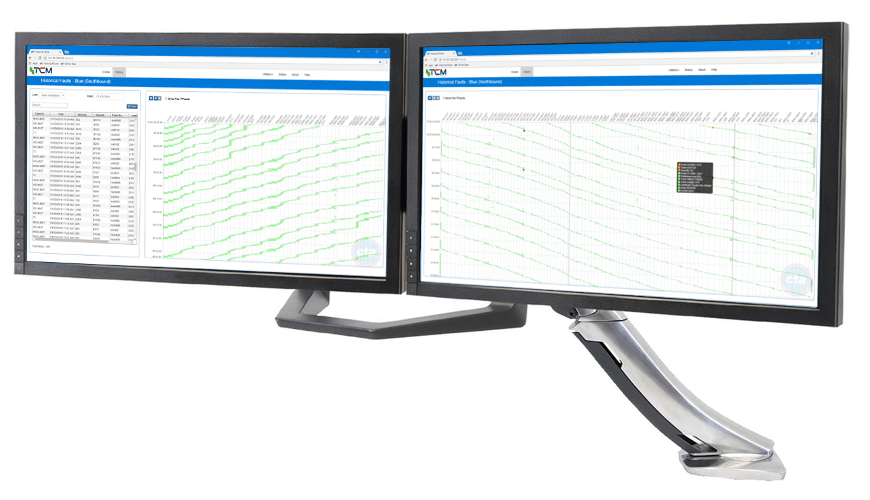Introducing TCM
The Track Circuit Monitoring System (aka Loss of Shunt Tool) is a Software based Monitoring Tool for Secondary Train Tracking and Evaluation.
⇒ A System to recognize Loss Of Shunt conditions and other Track Circuit and Switch Machine anomalies (see capabilities).
Most issues affecting the safety of a system are caused by a series of errors, oversights, omissions and poor communication, potentially compromising the integrity of key components of rail transportation infrastructure which can culminate in tragic consequences.
The TCM software helps identifying the potential for track circuit failure and alerting the operations, maintenance, and engineering organizations to the potential threat in the shortest possible time.
TCM© is a software application, designed for Transit Agencies, to monitor and evaluate train movements and the associated track circuit occupancies for integrity and plausibility – in Realtime. The TCM tool issues notifications and alerts upon detection of abnormal operation. If included in daily operations and maintenance, TCM increases equipment reliability and transportation safety.
The TCM Tool is being promoted by APTA as a Recommended Practice to identify LOS conditions.
TCM Capabilities
TCM has proven to detect and alert anomalies of safety critical components as follows:
- Loss of Shunt as a result of e.g.
-
- Circuits out of Adjustment
- Corrugated Rail / Parasitic Oscillation
- Damaged Bonds
- Broken rail clamps
- Loose connectors
- Rusty Rail
- Traction sand on rails
- Short circuits protected by LOS timer
- False Occupancies as a result of e.g.
- Circuits out of Adjustment
- Damaged Bonds
- Broken rail
- Traction Power Imbalance
- Dissimilar Rail
- Autumn leaves
- Insufficient Overlay between two adjacent track circuits
- Topology Errors
Switch Machines
- Switch out of Correspondence
- Switch movement while occupied
- Switch inconsistent position
Train-to-Wayside Communication
- Inconsistent TWC data
- Missing TWC data
- TWC error



